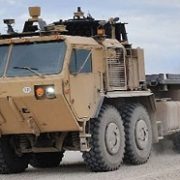Why are we seeing self-driving cars right now? This question was originally asked in Quora. Below is my answer:
To understand the development of autonomous cars, it is helpful to think of them as a kind of a robot, or to use a term more favored by those in the industry, an “unmanned system.” Autonomous cars (Unmanned Ground Vehicles) transform the role of people from that of an operator/driver to one of payload/cargo. Two trends, one demographic and the other technological, are driving the development of autonomous cars.
The significant demographic trend is the aging of population. In the 2013 Robotics Roadmap, which was presented to the Congressional Robotics Caucus by industry leaders, the impact of this surging senior demographic was discussed for almost every possible unmanned application. Countries as diverse as the United States, Japan, Mexico, and even in the Middle East are experiencing a growth in the number of elderly inhabitants. These people want to maintain their independence as long as possible. Seniors are a growing and eager market for autonomous cars.
The driving technological trend has been the spread of unmanned systems, especially for military purposes. The military view unmanned systems as a “force multiplier,” i.e. a way of reducing the number of personnel (soldiers). Since soldiers are the single most expensive item on a battlefield (a wounded US combatant can cost $2 million), the deployment of unmanned systems can result in significant cost savings.
However, most unmanned systems still require humans to operate them. To realize their full economic and tactical potential, some degree of autonomy is required. As a result, there is very good research being done on autonomous capabilities of unmanned systems. Since autonomous cars are actually a kind of unmanned system, this technology is maturing very rapidly.
There are other factors driving the development of unmanned cars. Some futurists think that economic doldrums will place private vehicle ownership out of reach of ordinary people. Supposedly, the next generation will come to depend on fleets of taxicabs, made more economically practical by their autonomous capabilities.
For more discussion on this issue, please see the following articles:



















 Wintergreen Research is publicizing a finding that the “…first responder and military ground robot marketplace will expand at close to 20% annually for the rest of the decade.” Furthermore, “Markets at $4.5 billion in 2013 reach $12.0 billion by 2019.”
Wintergreen Research is publicizing a finding that the “…first responder and military ground robot marketplace will expand at close to 20% annually for the rest of the decade.” Furthermore, “Markets at $4.5 billion in 2013 reach $12.0 billion by 2019.”